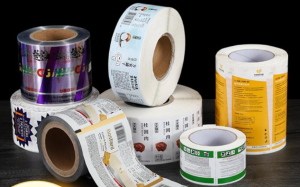The scientific principle of thermal paper fading
The color development of thermal paper depends on special coatings, whose main ingredients include:
Colorless dyes (such as crystal violet lactone)
Developers (such as BPA/BPS, which react with dyes to produce colors)
Stabilizers (delaying reactions)
When the thermal head of a thermal printer is heated, the developer chemically reacts with the dye to form visible text or images. However, this chemical bond is not stable and is easily decomposed by the following factors, causing fading:
Light: Ultraviolet rays accelerate the decomposition of the dye and make the handwriting lighter.
High temperature: High temperature environments (such as direct sunlight and proximity to heat sources) will cause the chemical reaction to proceed in reverse.
Chemical contact: Solvents such as alcohol and plasticizers (such as PVC receipt sleeves) may dissolve the coating.
Friction: Physical friction can damage the thermal layer and cause local fading.
How to extend the shelf life of thermal paper?
Store away from light: Store important documents in a cool, dark environment, such as a folder or sealed bag.
Control temperature: Avoid exposure to high temperature environments (such as in cars, near heaters), and the ideal storage temperature should be below 25°C.
Reduce chemical contact: Do not wipe thermal paper with alcohol and avoid long-term contact with plastic products.
Lamination or copying: For documents that need to be stored for a long time, you can seal them with plastic or scan them for archiving.
Choose high-quality thermal paper: Some products have added UV and antioxidants, which will fade more slowly.
Post time: Jun-20-2025


